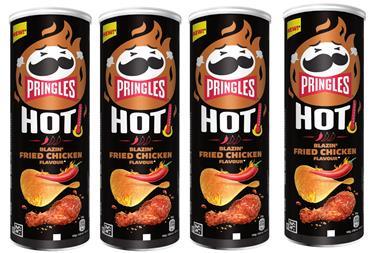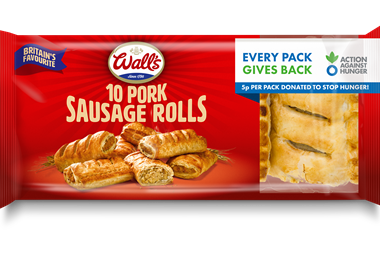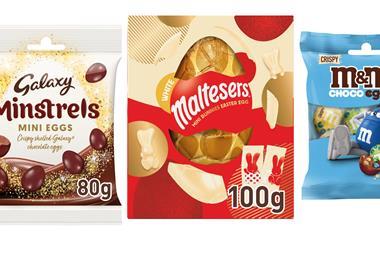From recent figures it's obvious more shoppers are turning their backs on traditional fizzy drinks. Add in recent bad publicity over levels of benzene in soft drinks and it's clear manufacturers have a tough time on their hands.
While the statistics show the cola sub-category grew by 2% in 2005, according to Britvic's 2006 category report this growth was down to an increase in sales of diet variants - up 7% in value. Fruit-flavoured carbonates and lemonade were down 12% and 4% respectively, while non-fruit flavoured carbonates also fell by 4%.
However, despite the downturn the carbonates category cannot be written off, if for no other reason than its sheer size. Colas alone command a 23% share of the take home soft drinks market. Carbonates may be on the back foot but their continued heavyweight presence must not be ignored.
Manufacturers believe innovation is the key to reviving the sector. Britvic category director Andrew Marsden says companies have to evolve to meet consumer needs. "The carbonates sector remains extremely strong in the take-home market, but consumption habits are changing," he says. "As people move towards healthier drinks, it is up to manufacturers and retailers to respond."
Marsden agrees that growth in the cola market is down to the performance of no-sugar variants and believes innovation is also the key with fruit-flavoured variants. "Recent innovations including our no-added sugar Tango Clear should help re-invigorate the fruit-flavoured carbonates category," he adds. "The future of carbonates lies in our ability to move product development forward with further innovation in no-sugar variants."
Coca-Cola bosses are also adamant fizzy drinks are here to stay. Head of carbonates Anita Huntley believes recent additions to the Coca-Cola range will help to keep the category buoyant.
"Carbonates remain huge within the soft drinks category and we're focused on offering a range of strong brands to meet consumer demand," she says.
"New launches have proved to be a great success, with the Z range worth more than £3.5m in independents. Fanta, Sprite, Lilt and Dr Pepper continue to account for more than half of all sales of flavoured carbonates through independents."
A recent addition to the Coca-Cola portfolio is Coca-Cola with lime. It is initially available for six months through to the end of summer, packaged in distinctive green PET bottles. Bosses hope it can breathe life into the regular colas market.
Huntley adds: "Consumers are increasingly adventurous and we are keen to innovate in order to meet changing demands and tastes. Coca-Cola with lime will appeal not only to regular Coca-Cola drinkers but also to new consumers. We are confident it will add significant incremental volume to the category."
Coca-Cola continues to extend the Z (zero-added sugar) range that has replaced Fanta Light. In April it launched Fanta Apple Z. As well as the new apple flavour the range comprises orange, icy lemon and summer fruits variants.
One of Britvic's first moves in 2006 was to add the cappuccino flavoured Pepsi Max Cino to its Pepsi Max range. Marsden says the new variant is about pushing innovation boundaries. "Pepsi Max Cino is a great addition to the Pepsi Max range," he says. "It will help invigorate the cola category and provide retailers with improved sales and profits. Pepsi Max Cino fulfils the needs of both consumers and retailers by providing an exciting new outlook on the sub-category."
Although the future may see soft drinks shelves tweaked to provide more fruit juice or functional drinks, it's evident from recent activity in the carbonates market that, for now, fizzy drinks are in no danger of disappearing from the radar altogether.
While the statistics show the cola sub-category grew by 2% in 2005, according to Britvic's 2006 category report this growth was down to an increase in sales of diet variants - up 7% in value. Fruit-flavoured carbonates and lemonade were down 12% and 4% respectively, while non-fruit flavoured carbonates also fell by 4%.
However, despite the downturn the carbonates category cannot be written off, if for no other reason than its sheer size. Colas alone command a 23% share of the take home soft drinks market. Carbonates may be on the back foot but their continued heavyweight presence must not be ignored.
Manufacturers believe innovation is the key to reviving the sector. Britvic category director Andrew Marsden says companies have to evolve to meet consumer needs. "The carbonates sector remains extremely strong in the take-home market, but consumption habits are changing," he says. "As people move towards healthier drinks, it is up to manufacturers and retailers to respond."
Marsden agrees that growth in the cola market is down to the performance of no-sugar variants and believes innovation is also the key with fruit-flavoured variants. "Recent innovations including our no-added sugar Tango Clear should help re-invigorate the fruit-flavoured carbonates category," he adds. "The future of carbonates lies in our ability to move product development forward with further innovation in no-sugar variants."
Coca-Cola bosses are also adamant fizzy drinks are here to stay. Head of carbonates Anita Huntley believes recent additions to the Coca-Cola range will help to keep the category buoyant.
"Carbonates remain huge within the soft drinks category and we're focused on offering a range of strong brands to meet consumer demand," she says.
"New launches have proved to be a great success, with the Z range worth more than £3.5m in independents. Fanta, Sprite, Lilt and Dr Pepper continue to account for more than half of all sales of flavoured carbonates through independents."
A recent addition to the Coca-Cola portfolio is Coca-Cola with lime. It is initially available for six months through to the end of summer, packaged in distinctive green PET bottles. Bosses hope it can breathe life into the regular colas market.
Huntley adds: "Consumers are increasingly adventurous and we are keen to innovate in order to meet changing demands and tastes. Coca-Cola with lime will appeal not only to regular Coca-Cola drinkers but also to new consumers. We are confident it will add significant incremental volume to the category."
Coca-Cola continues to extend the Z (zero-added sugar) range that has replaced Fanta Light. In April it launched Fanta Apple Z. As well as the new apple flavour the range comprises orange, icy lemon and summer fruits variants.
One of Britvic's first moves in 2006 was to add the cappuccino flavoured Pepsi Max Cino to its Pepsi Max range. Marsden says the new variant is about pushing innovation boundaries. "Pepsi Max Cino is a great addition to the Pepsi Max range," he says. "It will help invigorate the cola category and provide retailers with improved sales and profits. Pepsi Max Cino fulfils the needs of both consumers and retailers by providing an exciting new outlook on the sub-category."
Although the future may see soft drinks shelves tweaked to provide more fruit juice or functional drinks, it's evident from recent activity in the carbonates market that, for now, fizzy drinks are in no danger of disappearing from the radar altogether.



























No comments yet